Currently …
As the Curator of the Clemson University Herbarium, I focused my efforts on advancing the collection to make it fully accessible online, and I contribute to projects that serve the research and education missions of Clemson University, the College of Science and the Biological Sciences Department. These are some of the projects we are currently working on:
- Digitization of the Lichens of South Carolina
- Digitization of the Bryophytes of the Clemson Herbarium
- Flora of the Clemson Experimental Forest (watch video)
Past and some present…
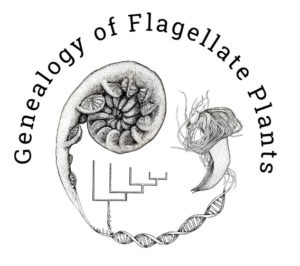 Gymnosperm phylogeny: as a postdoc in the Genealogy of Flagellate plants project, I discovered fascinating aspects of land plants with no flowers. Our group focused on Gymnosperms, and using a recently developed gene probe set, we generated the most comprehensive evolutionary tree of gymnosperms. Papers coming soon.
Gymnosperm phylogeny: as a postdoc in the Genealogy of Flagellate plants project, I discovered fascinating aspects of land plants with no flowers. Our group focused on Gymnosperms, and using a recently developed gene probe set, we generated the most comprehensive evolutionary tree of gymnosperms. Papers coming soon.
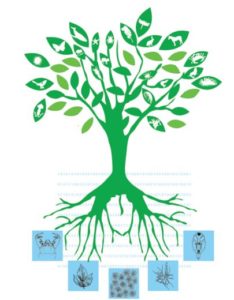 I participated in the Next Generation Phenomics project. I contributed to the Natural Language portion of the project, supporting the development of pipelines that extract phenotypic traits from taxonomic descriptions. We are using the technology developed by this project to extract traits for flagellate plants.
I participated in the Next Generation Phenomics project. I contributed to the Natural Language portion of the project, supporting the development of pipelines that extract phenotypic traits from taxonomic descriptions. We are using the technology developed by this project to extract traits for flagellate plants.
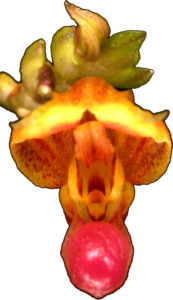 Evolutionary history of Scaphosepalum: I work with a small lineage of pleurothallid orchids, which is an excellent system to explore patterns of speciation, as many species live in sympatry. Moreover, the strange flowers of Scaphosepalum orchids display interesting morphological features that most likely offer us clues into their evolutionary history.
Evolutionary history of Scaphosepalum: I work with a small lineage of pleurothallid orchids, which is an excellent system to explore patterns of speciation, as many species live in sympatry. Moreover, the strange flowers of Scaphosepalum orchids display interesting morphological features that most likely offer us clues into their evolutionary history.
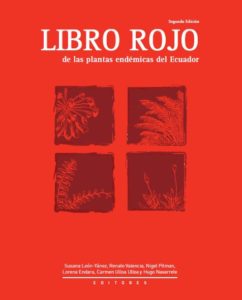 Endemic orchids of Ecuador: Through this project, I explored the different patterns of orchid endemism. In Ecuador, almost 25% of the species of orchids are endemic and occur in very small areas; therefore, their populations can easily disappear. Through this work, I explored aspects relevant to the conservation status of Ecuador’s endemic orchids.
Endemic orchids of Ecuador: Through this project, I explored the different patterns of orchid endemism. In Ecuador, almost 25% of the species of orchids are endemic and occur in very small areas; therefore, their populations can easily disappear. Through this work, I explored aspects relevant to the conservation status of Ecuador’s endemic orchids.
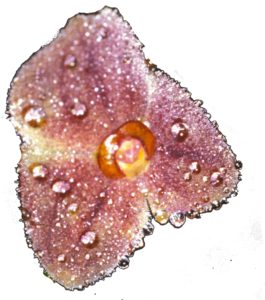
Monographic treatments of Stelis of Ecuador and Acronias: I enjoyed working greatly with the pleurothallid orchid Guru, Dr. Carlyle Luer. I helped him with a monograph on two very large genera, and got alpha-taxonomic training that has been one of the most important tools I have in my career.
![]() Rapid Assessment Project of the Paramos of Ecuador: High-elevation ecosystems are floristically fascinating, and from many regions, they are the source of fresh water. These ecosystems are under a lot of pressure, as the agricultural frontier expands, and the need for fresh water increases, both of which influence the diversity. Through this project, my colleagues and I documented the composition of different highlands subject to different land uses and human pressure.
Rapid Assessment Project of the Paramos of Ecuador: High-elevation ecosystems are floristically fascinating, and from many regions, they are the source of fresh water. These ecosystems are under a lot of pressure, as the agricultural frontier expands, and the need for fresh water increases, both of which influence the diversity. Through this project, my colleagues and I documented the composition of different highlands subject to different land uses and human pressure.
 Pollination of Dracula orchids: The pollination mechanism employed by this fascinating group of orchids represents one of the most intriguing mysteries to orchid science. I studied the pollination of several species of Dracula orchids endemic to northwestern Ecuador.
Pollination of Dracula orchids: The pollination mechanism employed by this fascinating group of orchids represents one of the most intriguing mysteries to orchid science. I studied the pollination of several species of Dracula orchids endemic to northwestern Ecuador.